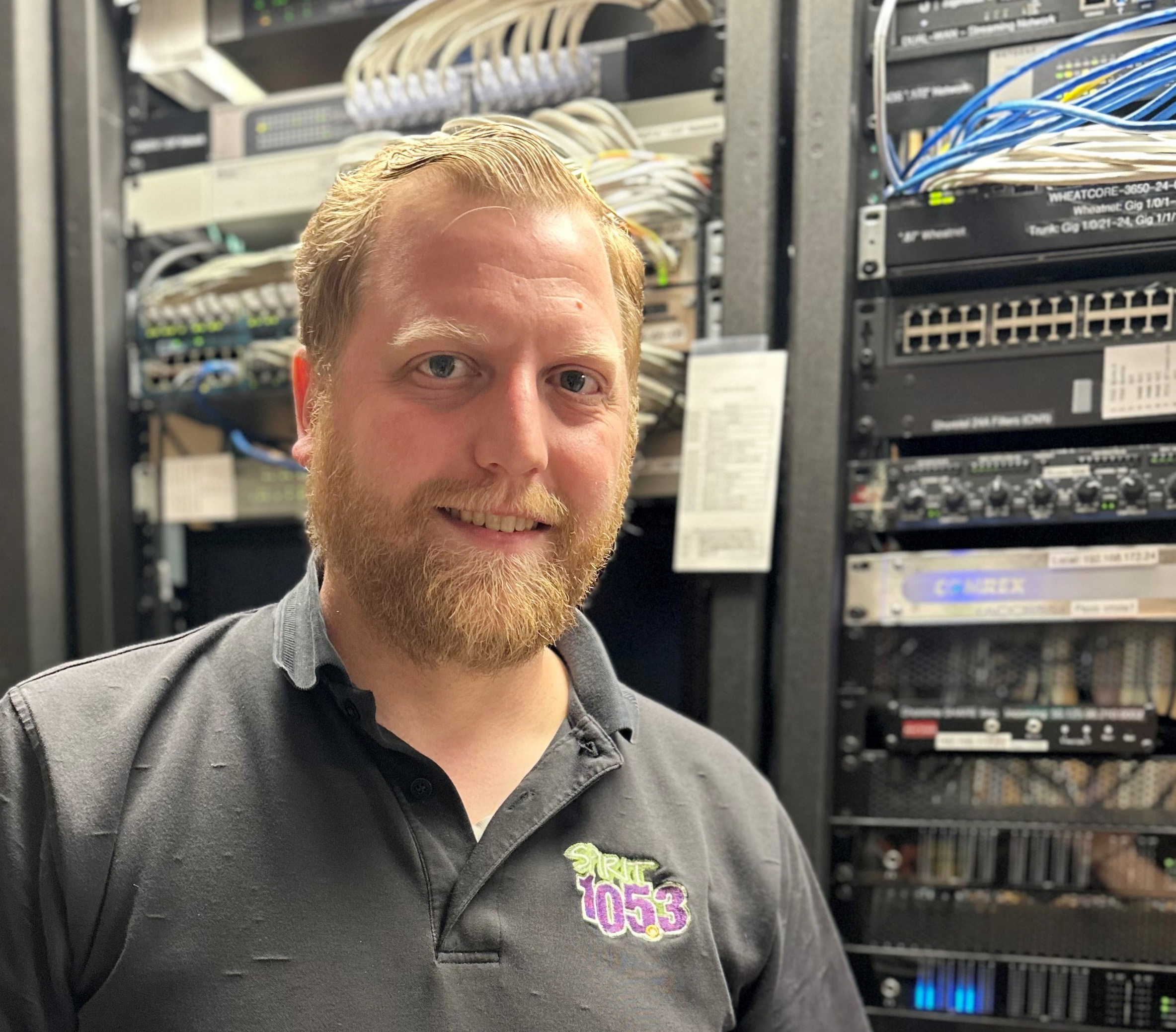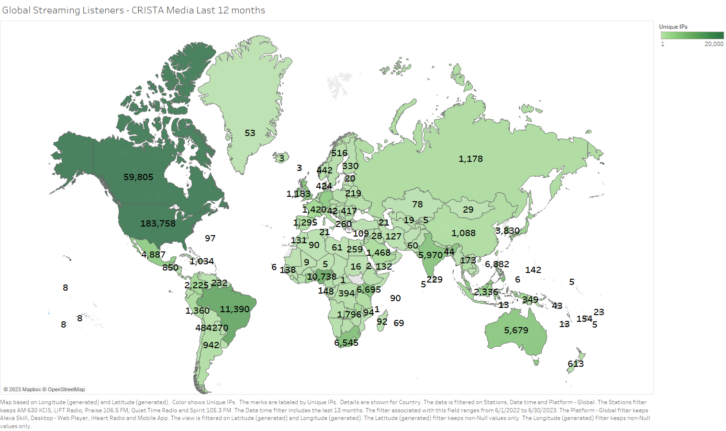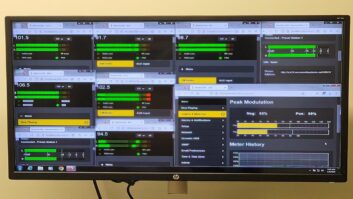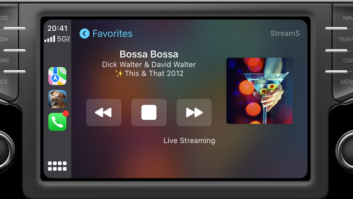CRISTA Ministries is a family of five ministries based on a campus in Shoreline, Wash., just north of Seattle. Its CRISTA Media arm broadcasts Christian music to northwest Washington on KCMS(FM) in the Seattle area and KWPZ(FM) in Bellingham, as well as religious teaching on KCIS(AM) in Seattle.
Each station has a simulcast stream; CRISTA (which stands for “Christianity in Action”) also offers online streams called Quiet Time Radio and Lift Radio, the latter of which is also heard on the HD-2 channel of the Seattle FM. And there is a podcast network and a lifestyle blog.
Chief Engineer Aaron Hume said the organization jumped into streaming “as soon as RealPlayer came out with streaming over dialup.” We interviewed him for the Radio World ebook “The Ecosystem of Streaming.”
Radio World: Can you describe your streaming “air chain”?

Aaron Hume: For most of our streams we go out of RCS Zetta, through our consoles and EAS boxes, then to our silent sense boxes, and then right into the encoder or off to the air chain.
RW: What streaming encoders do you use?
Hume: I’ve been here 11 years now, and one of my first big projects was the streaming coders, which was a good learning ground. I built them in 2012.
We’ve been using Orban Optimod-PC 1101 cards and they are awesome. However we plan to migrate to Wheatstone StreamBlades.
With Windows 10 and all the updates that continue to break things for radio, the PC is not a direction that I want to pursue; if we have an appliance such as the StreamBlade I would feel a lot more confident in it. And we’ll be saving about 20 rack units of space.
From there, we send it out to our StreamGuys, our CDN. We have two server operations that we connect to in different parts of the country, so if some of the backbone goes down through our main infrastructure, we should be able to still hit the secondary server in a different part of the country.
On top of that, we have two internet providers at our broadcast facilities, so if Comcast goes down, we still have Ziply or vice versa.
It’s important to make sure our stations are easy to find on smart speakers. When Amazon Echo came out, it worked great because we were already set up with TuneIn as a registered service. When iHeart took over the search portion of that with the default “hey, I want to listen to a radio station” sort of vibe, everything broke, so we ended up putting in specific Amazon Skills through StreamGuys. Then we could say “Hey, enable the Skill on your speaker,” and it would go by our prompts at “Play Spirit 105.3,” whereas before it would come up with some really weird station that was not in line with our organization or our content.
Since then Amazon has taken the reins back and said, “We want to help radio stations, let us get you listed properly so it’s easy for people to find you.” We still have our Skills with StreamGuys, but we also have a direct connection with Amazon that should have been there from the beginning.
Google Home has options to set up radio stations with their equivalent of a Skill.
RW: Do you have a sense of what percentage of the audience uses various platforms to listen?
Hume: One of the things that we are able to do with StreamGuys is split out aliases, so to speak. You can take one stream and say “This is my Icecast main stream,” then they can replicate it and call it the Amazon stream or another stream. We can give that URL to Amazon or whomever, and dedicate it for analytics collection, even though we’re only sending one stream out.
That has been useful to me as I go through monthly stats for our staff and salespeople to give them human numbers that Nielsen can’t — unique IP addresses, that sort of thing.
I’d guess a third to half of our listeners now use smart speakers — it’s way up there. A lot also use our mobile app, and a good chunk use the iHeart platform, which we’re listed on. We try to be everywhere, as much as possible.
SoCast produced a dedicated app for us. It’s a way to give listeners a lot more information. We’ve got contests and information on there, and events.
The next big thing is going to be platforms such as the DTS AutoStage, with hybrid radio switching the over-the-air reception to streaming, for people driving out of market. It will be a small percentage of drivers at first but I can see that sticking because automakers want “new and fancy.”

RW: What about considerations of audio quality and loudness consistency?
Hume: The Orban 1101 cards have done a really good job of managing what goes out. A big help is our automation system, Zetta; we have normalization of content that may be a little too loud or a little too quiet. It helps narrow that gap before it even hits our processing.
RW: Does it matter which browser someone is using?
Hume: We’ve been good about testing browsers with our web players. In the past this was a bit problematic because of things like autoplay functionality. Browsers change all the time, so you have to keep an eye on them and work with your web player provider to make sure there aren’t any weird bugs.
We were primarily using a Flash player until five or six years ago, when we switched to an HTML5 player. Of course Flash is dead now so I’m glad that we didn’t wait.
RW: We hear repeatedly that metadata management is important.
Hume: It’s a really important conversation. We did beta testing of the Inovonics 611 Streaming Monitor last year and decided to purchase one because it has been valuable for keeping an eye on our streams.
We sell metadata to our clients; we can synchronize their ads on the air with texts that you see on the screen, but it has been challenging to keep an eye on everything. We needed to develop a metadata stream specific to StreamGuys so our internet side would be exactly what we want it to be all the time.
I set up the Inovonics receiver to send me notifications when it couldn’t detect any changes in metadata for a chosen time interval. I set it for an hour. In fact it just popped up this week saying, “Hey, your metadata hasn’t changed.” The problem usually is just a data disconnect, and we just have to restart a service. But it didn’t have to go like that for a couple of days before somebody complained about it.
It’s really important to keep an eye on this if you’re going to be monetizing it.
RW: Any other advice for others?
Hume: Make sure you’ve got everything buttoned up with SoundExchange for licensing and royalty payments. Then pick a good preferred encoder type and go with it.
Also, analytics are very important at our organization. I can give my management real data on listenership. I can tell them how long people have been listening, and approximately where they’re listening from. I get in-depth logs from StreamGuys and I bring those into Tableau and make it pretty for our people to look at.












